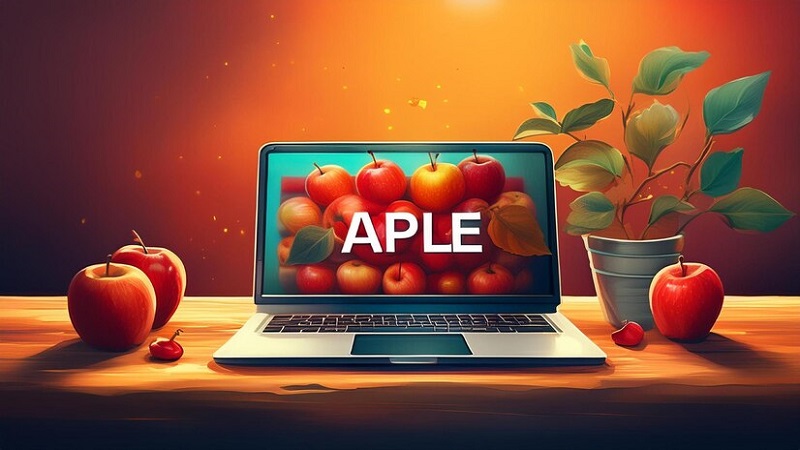With increasing awareness about privacy and data security, Apple’s authentication service, Apple Sign, provides a safe and convenient solution for users looking to protect their data online. This article covers Apple Sign, as discussed by Applemiller9to5mac, focusing on its security benefits, user experience, and its growing influence in the world of digital authentication. Apple’s innovation aligns with its commitment to privacy, offering users and developers a streamlined approach to accessing services while keeping personal information secure.
What is Apple Sign?
Apple Sign—officially known as Sign in with Apple—is an authentication service allowing users to log in to third-party apps and websites using their Apple ID. This tool aims to eliminate the hassle of creating multiple passwords while prioritizing security and simplicity. As explored by Applemiller9to5mac, this feature is particularly valuable in today’s digital age, where users increasingly seek options that protect their personal information from third-party access.
Users can authenticate with Apple Sign via Face ID, Touch ID, or their device passcode, significantly reducing risks associated with traditional passwords. With these built-in security measures, users are provided a quick, secure way to log in to apps without needing extra passwords.
Key Privacy Benefits of Apple Sign
Apple Sign is designed with user privacy at its core. Compared to other popular authentication services, such as Google or Facebook sign-ins, Apple’s solution reduces the risk of data exploitation and tracking. Applemiller9to5mac highlights some of the most appealing features that set Apple Sign apart:
1. Limited Data Sharing
Apple’s approach to data sharing is limited by design. Unlike other platforms, which may leverage user information for advertising, Apple Sign shares only essential information with the app or website a user is signing into. Apple allows users to choose what data to share, giving them greater control over their digital footprint. By using Apple Sign, users can avoid providing extensive personal information, keeping their online activities private and secure.
2. Hide My Email
The Hide My Email feature is a standout in Apple’s privacy toolkit. It allows users to create a random, unique email address for each app or service, which then forwards messages to the user’s actual email address. Applemiller9to5mac underscores how this tool helps users avoid spam and reduce risks related to data breaches. With Hide My Email, users don’t have to reveal their true email addresses, preventing third parties from accessing or misusing their personal contact details.
3. Integrated Two-Factor Authentication
Apple Sign uses two-factor authentication (2FA), adding a critical layer of security. The integration of 2FA means that users are protected even if someone tries to access their accounts from a new device or location. Combined with biometric verification, this dual-layered system is both convenient and highly secure, minimizing unauthorized access and offering users peace of mind.
How Apple Sign Stacks Up Against Google and Facebook
When comparing Apple Sign to other sign-in solutions, it’s clear that Apple takes a more privacy-focused approach. Services like Google and Facebook Sign-In may be popular, but they often come with extensive data collection and tracking, which Apple avoids.
Privacy-Centric Model
Apple Sign, as reported by Applemiller9to5mac, adheres to a privacy-centric model. While Google and Facebook provide convenience, they also gather user data across various services, building detailed profiles that are often used for targeted advertising. Apple, in contrast, maintains a commitment to minimal data sharing. This makes Apple Sign a preferred choice for users who prioritize privacy and want to avoid potential data exploitation.
Simplified User Control
Apple gives users direct control over what they share, including options like Hide My Email and limited data permissions. Users can review and change permissions, allowing for transparent access control. Applemiller9to5mac describes how this aspect of Apple Sign appeals to users who value privacy but also want a simple and streamlined authentication experience.
Advantages of Apple Sign for Developers
The benefits of Apple Sign extend beyond end-users; developers also gain substantial advantages by implementing this authentication feature. According to Applemiller9to5mac, here’s why developers are increasingly incorporating Apple Sign into their apps:
Improved User Experience
By integrating Apple Sign, developers can improve the onboarding process. Users are more likely to complete their registration and engage with the app if they have a simple, secure way to log in. This ease of access can lead to increased user retention, as users feel more comfortable knowing their data is handled responsibly.
Compliance with iOS App Store Requirements
Apple requires that any app offering third-party authentication (such as Google or Facebook login) must also offer Sign in with Apple. This policy ensures that users have a secure, privacy-focused option for authentication. Developers looking to meet iOS standards can seamlessly integrate Apple Sign and benefit from Apple’s support documentation, making the process smooth and efficient.
The User Perspective: Why Privacy Matters
For users, Apple Sign represents a shift toward secure, privacy-preserving practices. In an era marked by frequent data breaches and privacy controversies, Apple Sign appeals to a growing base of privacy-conscious users. According to Applemiller9to5mac, here’s how Apple Sign aligns with user expectations:
Control Over Personal Information
Users are more aware than ever of how their data is used and often exploited online. With Apple Sign, individuals can choose which apps or websites can access their information and restrict unwanted tracking. By offering an alternative to other data-hungry sign-ins, Apple caters to individuals who prioritize privacy.
User-Friendly Experience
The straightforward sign-in process, combined with biometric security, provides users with a seamless experience. By avoiding the need to remember multiple passwords or fill out lengthy registration forms, Apple Sign improves overall satisfaction and convenience.
Future Prospects of Apple Sign as Analyzed by Applemiller9to5mac
As digital privacy and security become increasingly important, Apple Sign is likely to play a critical role in the evolution of authentication methods. Here are some areas where Applemiller9to5mac believes Apple Sign may expand or improve in the future:
Enhanced Biometrics
Biometric technology is constantly evolving, and Apple Sign could benefit from further advances in this field. As Face ID and Touch ID continue to improve, users can expect even faster, more secure authentication experiences. These developments could further entrench Apple Sign as a frontrunner in user-centric privacy.
Cross-Platform Integration
While Apple primarily focuses on its own ecosystem, it’s possible that Apple Sign could expand to support other operating systems. A broader scope could encourage wider adoption, making Apple Sign a universal solution for secure login.
Conclusion: Apple Sign’s Role in Privacy-First Authentication
In an increasingly interconnected world, Apple Sign stands out as a simple yet effective solution for secure, privacy-focused authentication. Its strong emphasis on protecting user data, as highlighted by Applemiller9to5mac, underscores Apple’s commitment to user-centric privacy. By offering options like Hide My Email, limiting data sharing, and requiring minimal permissions, Apple has created an authentication service that appeals to privacy-conscious users and developers alike.
As Applemiller9to5mac continues to cover the development and expansion of Apple Sign, it’s clear that Apple’s commitment to privacy will shape the future of secure online interactions. Whether it’s through enhanced biometrics, expanded platform compatibility, or increased adoption, Apple Sign represents a future where convenience does not come at the expense of user privacy. Read More Famebeauty.org.

